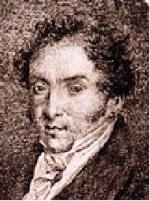Early Life and Musical Beginnings
Jacques Féréol Mazas was born on September 23, 1782, in Lavaur, France. From an early age, Mazas displayed a remarkable aptitude for music, particularly the violin. His talent led him to the prestigious Paris Conservatoire, where he studied under the renowned violinist Pierre Baillot. This educational foundation would prove crucial in shaping Mazas’s future career and musical contributions.
Rise to Prominence
Mazas’s exceptional skills as a violinist were recognized early in his career. In 1805, he received the first prize at the Paris Conservatoire, a significant achievement that marked the beginning of his professional journey. His talent did not go unnoticed, and in 1808, he had the honor of performing a violin concerto dedicated to him by the famous composer Daniel François Esprit Auber. This performance catapulted Mazas into the spotlight and established him as a rising star in the European music scene.
European Tours and Musical Influence
Following his success in Paris, Mazas embarked on a series of tours across Europe. These travels not only showcased his virtuosic abilities but also exposed him to various musical styles and traditions. The experiences he gained during these tours would later influence his compositions and teaching methods, infusing them with a cosmopolitan flair that set them apart from his contemporaries.
Career as a Performer and Conductor
Upon returning to France, Mazas continued to build his reputation as a performer. In 1831, he accepted the position of first violin at the Théâtre du Palais-Royal in Paris, a prestigious appointment that solidified his status in the French music scene. His career took another significant turn when he was appointed as the Directeur des concerts in Orléans, where he also directed the city’s Opéra Comique theatre. These roles allowed Mazas to expand his musical influence beyond performance, delving into the realms of conducting and artistic direction.
Pedagogical Contributions
Perhaps Mazas’s most enduring legacy lies in his contributions to violin pedagogy. From 1837 to 1841, he served as the director of the Conservatoire in Cambrai, where he had the opportunity to shape the next generation of violinists. It was during this period and in the years that followed that Mazas produced his most significant pedagogical works.
The Famous Études
Mazas’s opus 36, titled “75Études mélodiques et progressives,” stands as his crowning achievement in the field of violin education. This comprehensive collection is divided into three parts:
- Études spéciales
- Études brillantes
- Études d’artistes
These études are designed to guide violinists from intermediate to advanced levels, covering a wide range of technical and musical challenges. The “Études d’artistes” are particularly noteworthy, as they are considered excellent preparation for the famously difficult24 Caprices by Niccolò Paganini.
Compositions Beyond Études
While Mazas is primarily remembered for his educational works, he was also a prolific composer in other genres. His oeuvre includes:
- Operas: “Le Kiosk” (which had eight performances at the Opéra-Comique in Paris) and “Corinne au capitole”
- Chamber music: Including trios for two violins and cello (or viola)
- Solo works: Such as “La Consolation,” an elegy for viola and orchestra (or piano)
- Duets: Numerous compositions for two violins, catering to various skill levels
Musical Style and Influence
Mazas’s compositions reflect the transitional period between the Classical and Romantic eras. His works often combine the formal structures of the Classical period with the expressive qualities emerging in the Romantic style. This blend made his music both accessible to students and appealing to audiences of his time.
As a violinist and composer, Mazas was part of a distinguished lineage of French violin playing. His teacher, Pierre Baillot, was one of the leading figures of the French Violin School, which also included luminaries such as Rodolphe Kreutzer and Pierre Rode. This school of thought emphasized a refined, elegant style of playing that is evident in Mazas’s compositions and teaching methods.
Legacy and Continuing Influence
Jacques Féréol Mazas passed away on August 26, 1849, in Bordeaux, France. However, his influence on violin pedagogy has far outlived him. The études he composed continue to be staples in violin education worldwide, helping countless students develop their technique and musicality.
Mazas’s approach to violin instruction, which emphasizes progressive learning and the development of both technical skill and musical expression, has influenced generations of violin teachers. His études are valued not just for their technical challenges but also for their musical merit, making them enjoyable for students to practice and perform.
Conclusion
Jacques Féréol Mazas’s life and work embody the dedication of a true musical polymath. As a performer, composer, conductor, and teacher, he left an indelible mark on the world of classical music, particularly in the realm of violin education. His études remain a testament to his understanding of the violin’s capabilities and the needs of developing musicians.
While he may not be a household name like some of his contemporaries, Mazas’s contribution to the art of violin playing is immeasurable. Every violinist who has worked through his études has, in some way, been touched by his musical legacy. As long as violinists continue to strive for technical perfection and musical expression, the name Jacques Féréol Mazas will remain an important part of classical music history.

